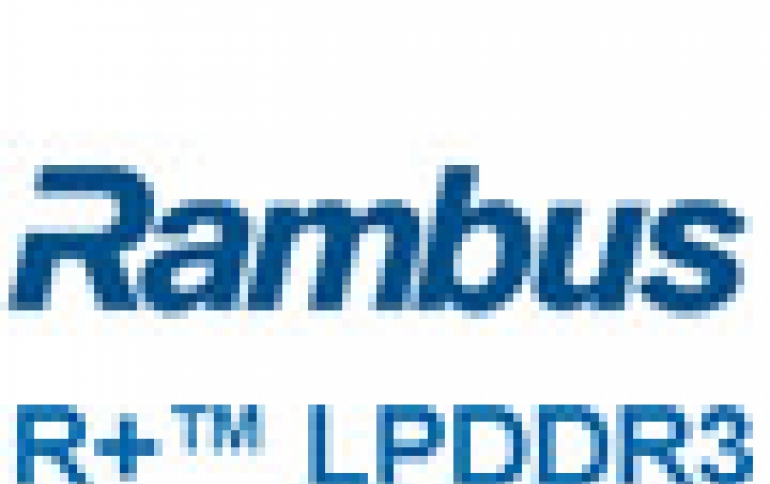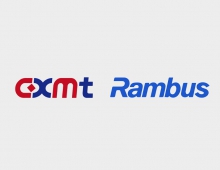
Rambus Introduces R+ LPDDR3 Memory Solution
Rambus today announced its first LPDDR3 offering targeted
at the mobile industry.
The R+ LPDDR3 memory architecture is fully compatible with
industry standards while providing improved power and
performance. The architecture includes both a controller
and a DRAM interface. According to Rambus, it can reduce
active memory system power by up to 25% and supports data
rates of up to 3200 megabits per second (Mbps), which is
double the performance of existing LPDDR3 technologies.
"Each generation of mobile devices demands even higher performance with lower power. The R+ LPDDR3 technology enables the mobile market to use our controller and DRAM solutions to provide unprecedented levels of performance, with a significant power savings," said Kevin Donnelly, senior vice president and general manager of the Memory and Interface Division at Rambus. "Since this technology is a part of our R+ platform, beyond the improvements in power and performance, we're also maintaining compatibility with today's standards to ensure our customers have all the benefits of the Rambus' superior technology with reduced adoption risk."
The seed to the improved power and performance offered by the R+ LPDDR3 architecture is a low-swing implementation of the Rambus Near Ground Signaling technology. Essentially, this single-ended, ground-terminated signaling technology allows devices to achieve higher data rates with significantly reduced IO power.
Additional key features of the R+ LPDDR3 include:
- 1600 to 3200Mbps data rates
- Multi-modal support for LPDDR2, LPDDR3 and R+ LPDDR3
- DFI 3.1 and JEDEC LPDDR3 standards compliant
- Supports package-on-package and discrete packaging types
- Includes LabStation software environment for bring-up, characterization, and validation in end-user application
- Silicon proven design in GLOBALFOUNDRIES 28nm-SLP process
The R+ LPDDR3 memory controller and DRAM interface solutions are currently available.
"Each generation of mobile devices demands even higher performance with lower power. The R+ LPDDR3 technology enables the mobile market to use our controller and DRAM solutions to provide unprecedented levels of performance, with a significant power savings," said Kevin Donnelly, senior vice president and general manager of the Memory and Interface Division at Rambus. "Since this technology is a part of our R+ platform, beyond the improvements in power and performance, we're also maintaining compatibility with today's standards to ensure our customers have all the benefits of the Rambus' superior technology with reduced adoption risk."
The seed to the improved power and performance offered by the R+ LPDDR3 architecture is a low-swing implementation of the Rambus Near Ground Signaling technology. Essentially, this single-ended, ground-terminated signaling technology allows devices to achieve higher data rates with significantly reduced IO power.
Additional key features of the R+ LPDDR3 include:
- 1600 to 3200Mbps data rates
- Multi-modal support for LPDDR2, LPDDR3 and R+ LPDDR3
- DFI 3.1 and JEDEC LPDDR3 standards compliant
- Supports package-on-package and discrete packaging types
- Includes LabStation software environment for bring-up, characterization, and validation in end-user application
- Silicon proven design in GLOBALFOUNDRIES 28nm-SLP process
The R+ LPDDR3 memory controller and DRAM interface solutions are currently available.




















